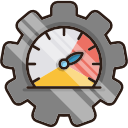Calendars and Time Blocking: Google Calendar, Outlook, Fantastical
Google Calendar shines with shared calendars, smart invites, and easy booking links. Paired with a task app that supports time blocking, it creates meaningful guardrails. If you rely on meet-heavy days, color-coding and focus blocks help. Share your color legend; we’ll compile a reader cheat sheet.
Calendars and Time Blocking: Google Calendar, Outlook, Fantastical
Outlook remains reliable for corporate rhythms, offering scheduling assistants and dependable cross-time-zone support. When tasks sync into your calendar, it reduces double-entry fatigue. If your team lives in Outlook, aligning tasks to meeting realities is smoother. How do you protect deep work inside Outlook?






